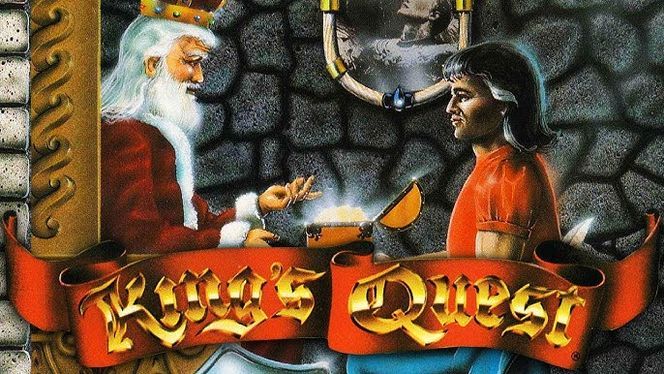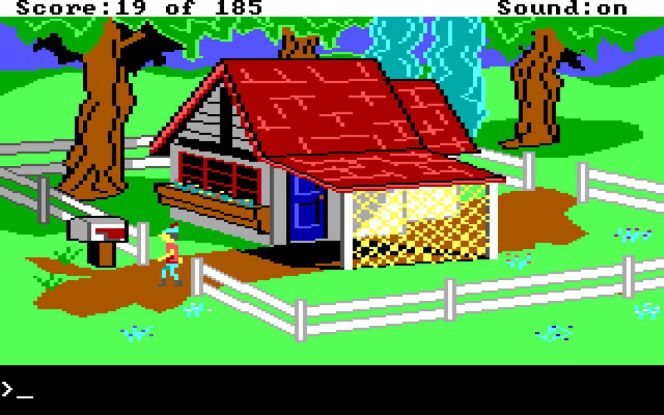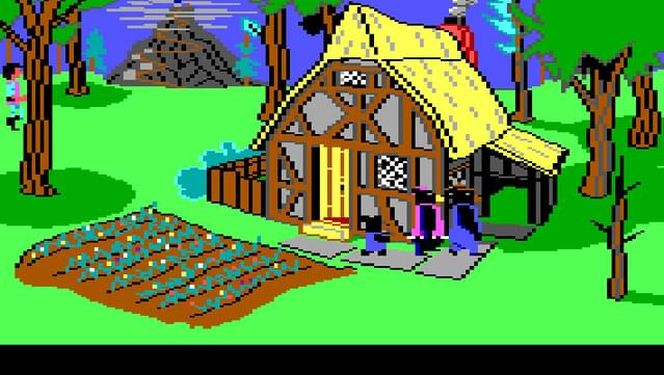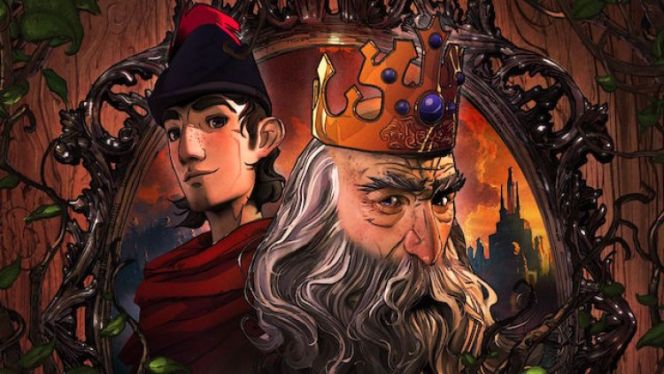RETRO – 1984 was a special year in the history of video games. It was the year that Sierra On-Line’s legendary creation, King’s Quest I: Quest for the Crown, was born. This game fundamentally changed the adventure game genre, and now, 40 years later, we look back with respect and nostalgia. Designed by Roberta Williams, the grande dame of adventure games, its legacy is still vividly alive in the memories of gamers today.
The story of the creation of King’s Quest I is closely intertwined with the founders of Sierra On-Line, Ken and Roberta Williams. In the early 1980s, Sierra On-Line was just a small company developing various smaller games. However, Roberta Williams dreamed of a game that went beyond the text-based adventure games of the time and provided a visually stunning experience.
Released on IBM’s New Machine
From a technological standpoint, King’s Quest I was revolutionary. The game was developed for IBM’s new PCjr computer, which allowed the use of colorful graphics. It was a three-dimensional graphic adventure game where players could control a character on the screen, as opposed to previous games that required text commands. This innovation was a significant step forward in terms of user experience and defined the future of adventure games.
Players assume the role of Sir Graham, a brave knight of the kingdom of Daventry. The king tasks Graham with finding three magical items that will restore the kingdom to its former glory. Throughout the game, players solve various logical puzzles, find hidden objects, and interact with different characters. The simple yet captivating story combined with technological innovations made King’s Quest I one of the most beloved adventure games.
Sir Graham’s Adventures
As players explore the game world, they encounter numerous challenges. Sir Graham’s journey is not easy: wicked witches, giants, and other creatures block his path as he searches for the three magical items. One of the most memorable moments in the game is when Graham meets the wicked witch. Players must figure out how to defeat the witch and obtain one of the magical items.
One of the greatest strengths of King’s Quest I is its storytelling and character diversity. The game is full of humorous and exciting moments that contribute to its unique atmosphere. Small details, such as the unique dialogues of various characters and hidden jokes, all contributed to players returning again and again to the world of King’s Quest.
Throughout the game, players must solve numerous logical puzzles. These puzzles are not always easy and often require serious thinking. For example, when Graham encounters a giant dragon in a dark cave, players must figure out how to defeat the dragon without fighting it directly. These types of challenges made King’s Quest I so exciting and memorable.
A Genre-Defining Game
The impact of King’s Quest I goes far beyond its release. The game’s success not only resulted in sequels – a total of eight games in the series – but also laid the foundation for an entire genre. The popularity of graphic adventure games peaked in the 1980s and 1990s, with many other developers following Sierra’s example.
Roberta Williams played a pioneering role in recognizing female game developers. Her creative ideas and storytelling skills resulted in numerous memorable games that continue to significantly influence both players and developers. Thanks to the success of the King’s Quest series, Sierra On-Line became one of the most prominent game development companies, releasing other iconic games such as the Space Quest and Leisure Suit Larry series.
The influence of King’s Quest I is still felt in modern adventure games. Titles developed by Telltale Games, such as The Expanse: A Telltale Series and the upcoming The Wolf Among Us 2, often draw inspiration from classic Sierra games. These modern games focus on storytelling and character development, similar to King’s Quest I.
Additionally, the nostalgia for retro games has been revived thanks to digital re-releases and fan projects. Platforms like GOG.com and Steam allow modern gamers to enjoy these classic titles. The digital re-release of King’s Quest I enables new generations to discover Sir Graham’s adventures.
A Remarkable Remake in 2015
In 2015, the King’s Quest series was revived in the form of a modern remake, bringing Sir Graham’s adventures to today’s gamers. Developed by The Odd Gentlemen and published by Activision, the goal was to honor the legacy of the original series while providing a fresh experience.
The new version combined classic elements with modern graphics and gameplay, allowing a new generation to discover the charm of the King’s Quest world. The remake successfully brought back the magic of the old game while enriching it with new elements, such as a more detailed narrative and advanced character development. This modern reinterpretation helped bring King’s Quest back into the spotlight and gain new fans.
This Tale is Eternal
King’s Quest I: Quest for the Crown is a true classic that rightfully earned its place in the history books of video games. The innovative gameplay, enchanting story, and technological innovations all contributed to the game remaining memorable to this day. Just as Sir Graham bravely faced the challenges to save Daventry, players keep returning to this magical world to relive the adventures and discover hidden treasures.
The 40-year-old King’s Quest I is not only a defining piece of the adventure game genre but also a game that has inspired and will continue to inspire generations. Sir Graham’s adventures will forever live in the hearts of players, and the legacy of King’s Quest I will continue to shine brightly in the history of video games.
-Gergely Herpai „BadSector”-












![Vampire: The Masquerade - Bloodlines – Prepare for Your Final Sunset! [RETRO-2004]](https://thegeek.games/wp-content/uploads/2025/10/theGeek-Vampire-the-Masquerade-Bloodlines-302x180.jpg)






Leave a Reply